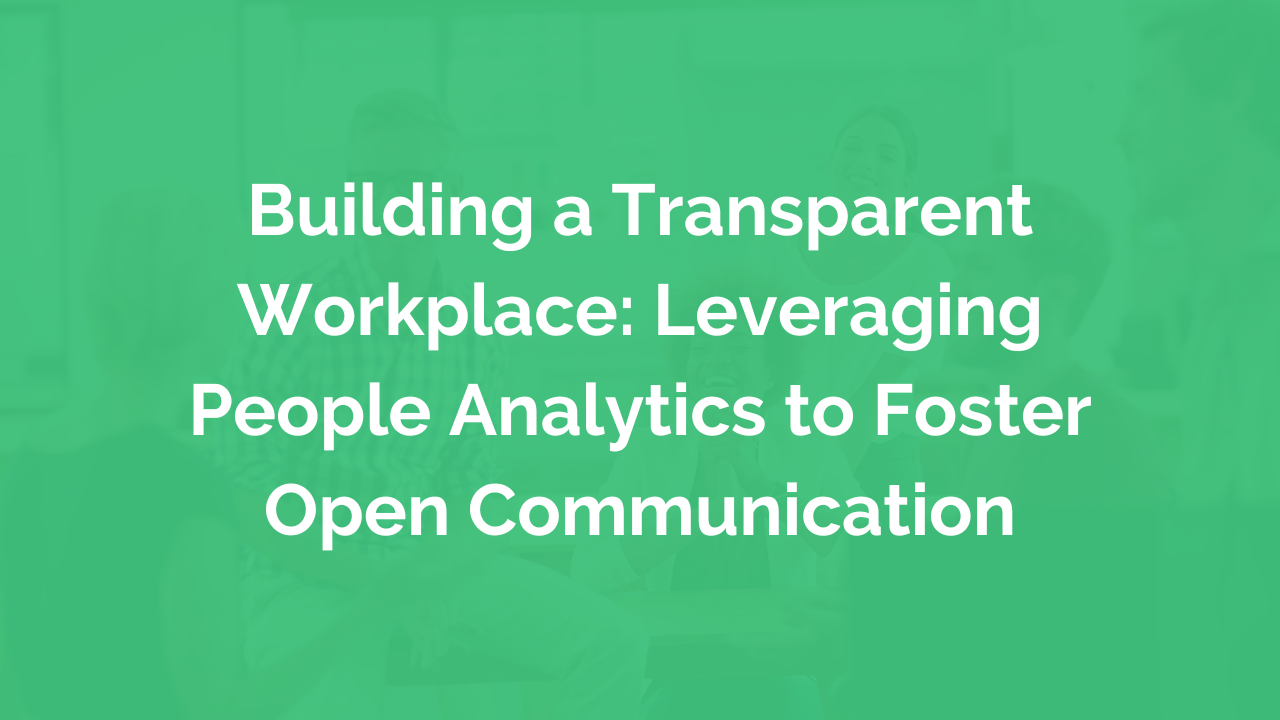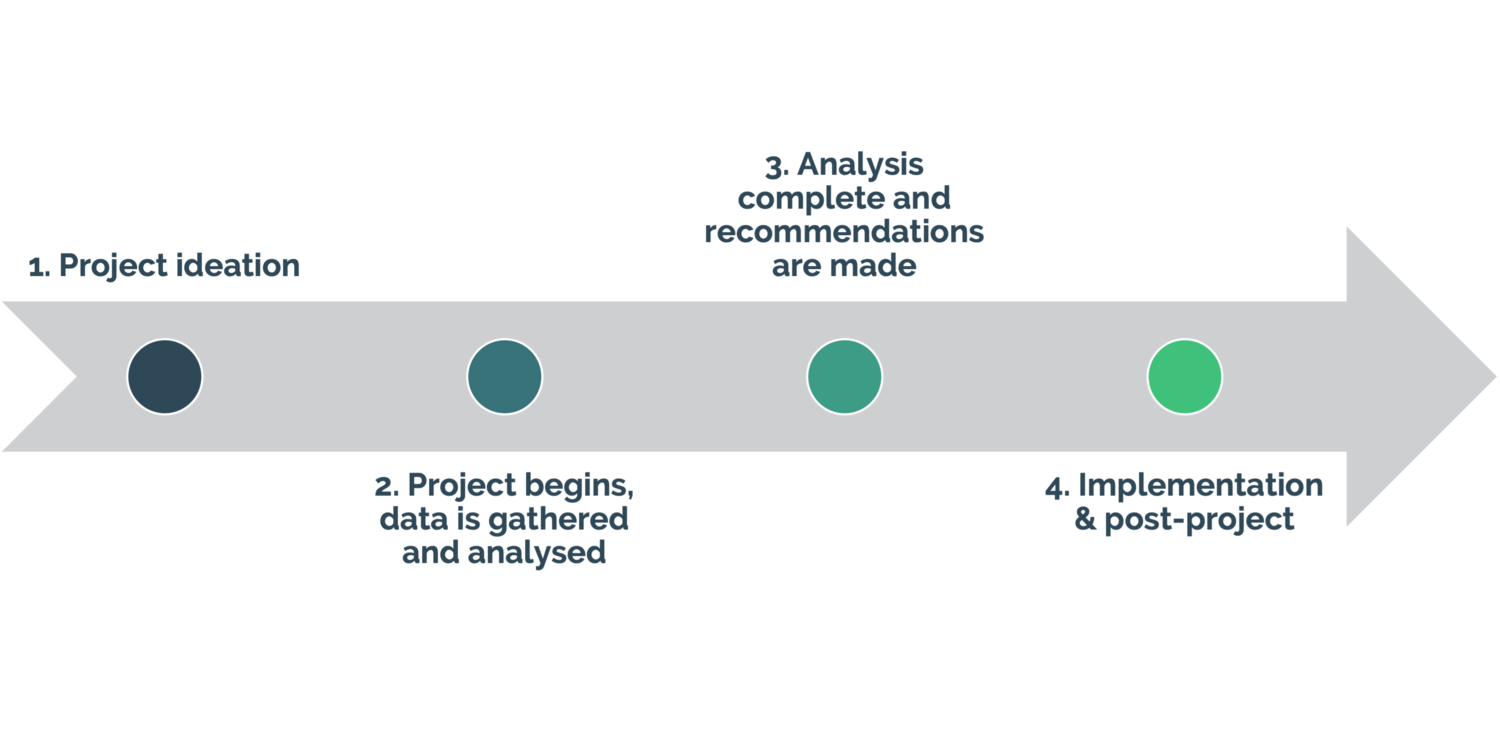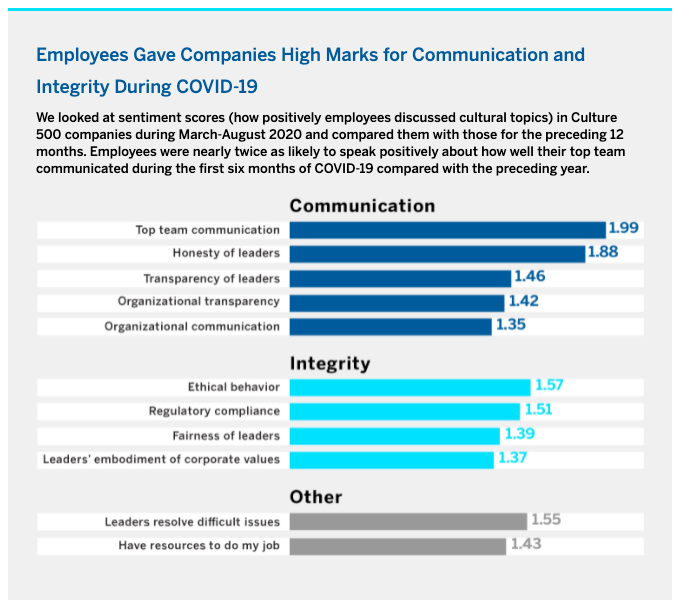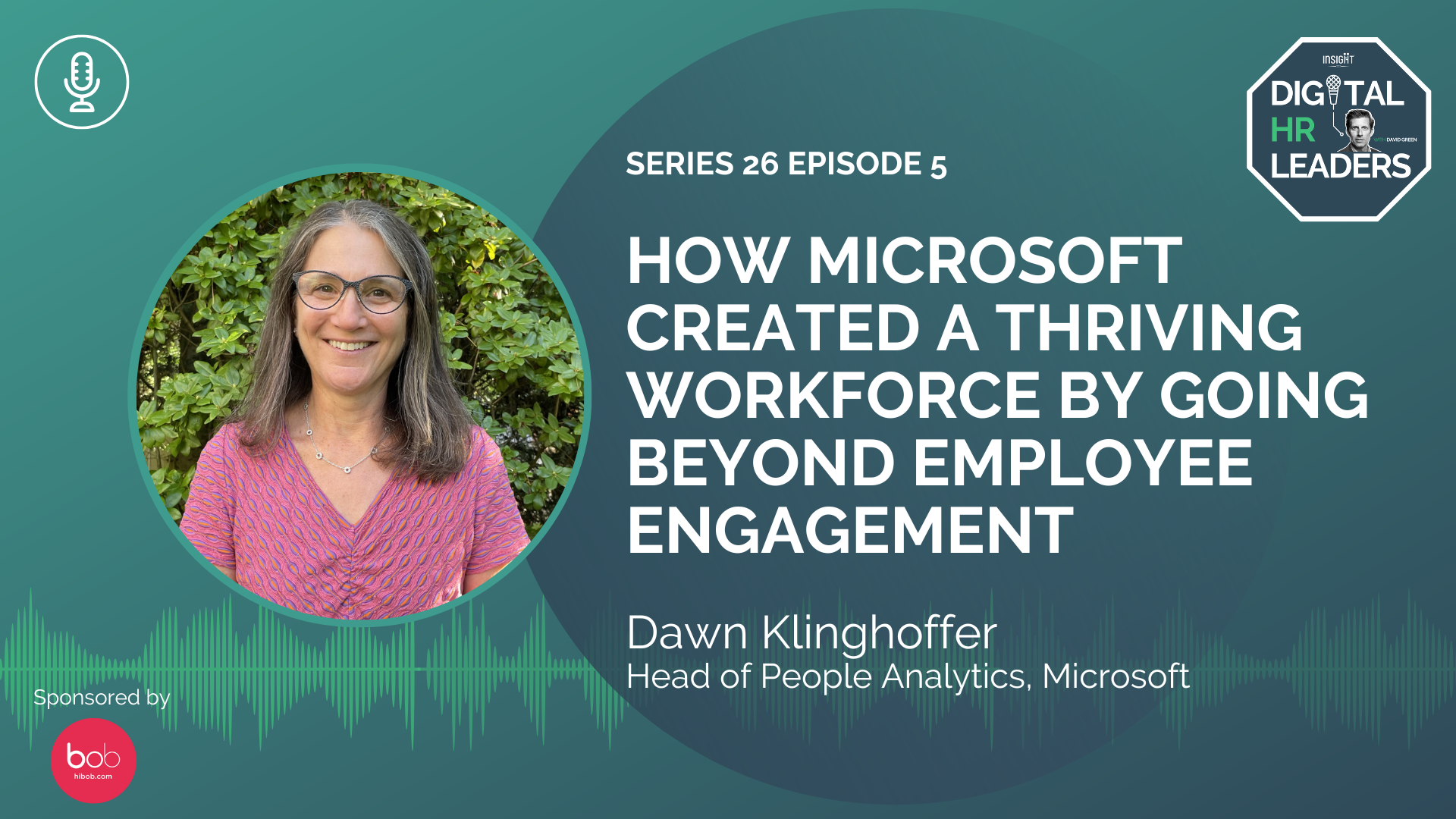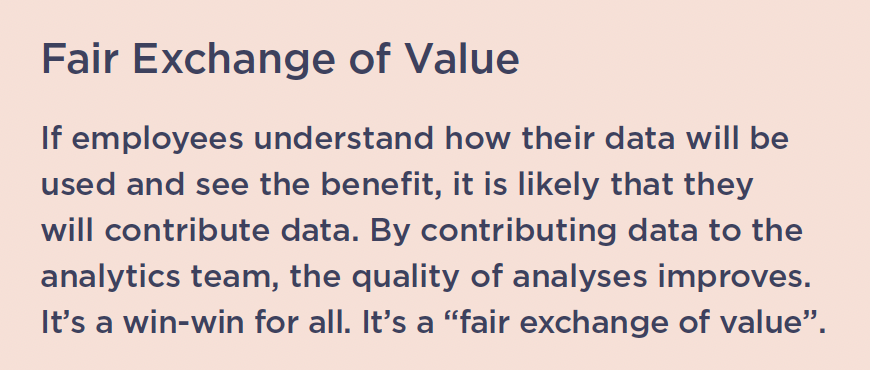Building a Transparent Workplace: Leveraging People Analytics to Foster Open Communication
Transparency is crucial when it comes to cultivating a positive work culture. It allows for open communication and collaboration; with it, organisations can retain the trust and loyalty of their employees.
According to Slack’s Future of Work study, 80% of today’s workers want insights into how decisions are made at their organisation, and 87% of today’s job seekers want transparency in their future workplace.
By establishing open communication and a strong foundation of trust between employers and employees, businesses can create a collaborative environment where everyone feels valued and appreciated. Therefore, employers need to have a clear idea of how they can measure and improve transparency within the entire organization.
But what does transparency mean in the workplace, and how can organisations embed this into their work culture?
What Is Workplace Transparency?
Workplace transparency refers to the practice of open and honest communication between employers, employees, and stakeholders. It encompasses various aspects such as clear job descriptions, sharing information about organisational goals, strategies, operations, and policies, and involving everyone in the decision-making process.
Adapted from Reorg: How to Get it Right, by Stephen Heidari-Robinson and Suzanne Heywood
However, many organisations struggle to establish a work culture of psychological safety where employees feel valued, respected, and encouraged to share their ideas openly and honestly. This is where People Analytics comes in.
The Role of People Analytics in Building Transparency
People analytics, involves using data analysis to gain insights into an organisation’s employees, their behaviours, and the work culture. By collecting, analysing, and interpreting the right people data, organisations can develop a comprehensive understanding of how communication practices impact employee engagement, motivation, and productivity.
And while hybrid and remote working may have changed the way we measure organisational culture, certain key metrics can still be used to measure the degree of transparency within an organisation. These include:
Communication Frequency
How often do employees communicate with one another and their managers? Are there any disparities between remote and in-house employees? These are crucial questions that need to be addressed when looking at transparency in the workplace.
In a transparent workplace, employees should feel they have access to the information they need to do their jobs effectively, and their voices are heard. Measuring communication frequency can help assess how often information is shared between employers and employees.
There are several data points to track communication frequency, such as:
Email and Instant Messaging: One of the easiest ways to measure communication frequency is by looking at the number of emails and instant messages sent between teams, managers, and subordinates.
Surveys: Surveys are a valuable tool for measuring communication frequency. They can be used to gather employee feedback on how often they communicate with their managers and the quality of those conversations.
Meetings and calls: Measuring the frequency and duration of meetings and calls can also provide insight into communication patterns within the workplace. For example, if employees are not attending regular team meetings, this can be a sign that communication should be more transparent.
Feedback Mechanisms
Another way to leverage people analytics in fostering a culture of transparency, open communication and collaboration is to assess the effectiveness of feedback mechanisms.
Feedback can be a powerful tool in giving employees a real voice. Research from Gallup has also found that positive feedback mechanisms can encourage collaboration and greater performance in the workplace.
Measuring the frequency and quality of feedback allows employers to gain insights into the effectiveness of their feedback mechanisms. Here are some data points to track:
Surveys: Surveys can better understand employees’ opinions on the feedback they receive from managers or peers.
Channels of feedback: Feedback can be provided in various ways, such as through surveys, performance evaluations, one-on-one meetings, or suggestion boxes. Measuring the frequency of channel usage and response rates can help organisations identify preferred communication channels and create more opportunities for feedback.
Actionable feedback: This is one of the most important metrics for measuring the effectiveness of feedback mechanisms. To fully understand how feedback improves communication and collaboration within the workplace, tracking the percentage of feedback that has been acted upon, leading to changes in policies, procedures, or other aspects of the workplace, is essential.
Manager-Employee Relationships
The relationship between managers and their employees plays a pivotal role in an organisation’s success. Research from McKinsey shows that a healthy, trusting and transparent relationship between managers and their staff can help foster an open work culture that encourages collaboration, productivity, creativity and innovation.
People analytics can help measure how well manager-employee relationships are doing by tracking various data points such as:
Employee engagement surveys: Monitoring employee engagement levels can help organisations understand how well employees feel supported, valued and empowered in their roles. And don’t worry about the common myth of surveying too often - leading companies in people analytics, like Microsoft, send out pulse surveys every day to gain a better understanding of how their employees’ sentiments. To learn more about how Microsoft is creating a thriving workforce, we highly recommend you listen to the conversation between David Green and Dawn Klinghoffer, Head of People Analytics at Microsoft, on the Digital HR Leaders podcast.
Performance reviews: Measuring the frequency of performance reviews, one-to-ones, or coaching sessions and tracking the feedback from these interactions provides insights into the nature of manager-employee relationships in the workplace.
Employee Feedback: Asking employees for feedback on their managers and assessing the quality of that feedback can also provide valuable insights into how well manager-employee relationships are doing. This can be done in focus groups, one-to-ones, or even surveys.
Team Performance and Engagement Data: Finally, tracking team performance and engagement data can provide valuable insights into collaboration and teamwork. By analysing these metrics, organisations can identify areas for improvement and work towards creating a more open and transparent work culture.
Democratisation Is Key
We have discussed how People Analytics can measure and improve communication, collaboration, and productivity within the workplace. However, the most important aspect to emphasise is that in order to create a culture of open communication truly, people analytics should be democratised, with everyone in the organisation having access to the insights it provides.
As we have highlighted in our Insight222 2022 People Analytics Trends report, if employees understand how their data will be used and see the benefit, it is likely that they will contribute data. By contributing data to the analytics team, the quality of analyses improves.It’s a win-win for all. It’s a “fair exchange of value”.
Ultimately, people analytics is only as good as the hands it is put into, and if organisations want to create an open and transparent work culture, then they need to start using people analytics to its full potential and give everyone in the organisation access to it. This includes getting sponsorship from senior executives and ensuring that the insights from people analytics are always put into action.
While sharing people analytics results with employees and managers, it is essential to provide context and specificity. If people data is delivered without any context, it could risk people analytics being perceived as unintentional. It can create an environment where employees feel like their work is being constantly monitored.
Unlocking the Power of People Analytics for Transparency & Collaboration
Building a culture of transparency is a gradual process and can only be achieved after a period of time. However, with the emergence of people analytics, organisations can now use the power of data to measure and improve communication, collaboration, and productivity within their organisation - if used correctly!
People analytics holds the potential to help organisations foster a positive workplace culture where everyone feels heard and respected. By effectively collecting, analysing, and presenting data in an open and transparent manner, employees can gain valuable insights into their performance and how they interact with their teammates, which in turn will likely result in higher levels of productivity, creativity, and collaboration.
To enhance your people analytics capabilities, ensure that your team is equipped with the necessary skills and resources to use it effectively whilst ensuring everyone within the organisation has access to the insights it provides. With hard work and dedication, your people analytics will soon be helping you create a culture of transparency and collaboration in your workplace!
ABOUT THE AUTHOR
Jasdeep Kareer
Jasdeep joined Insight222 in 2023 as a member of the products and services team. She brings a wealth of experience in data science, analytics, and client delivery having worked across a wide variety of industry sectors. After working for three years in Dubai, Jasdeep returned to the UK in 2019 where she established and led the People Science team at GE. She went on to develop an analytics client facing function within the analytics business at Workday. Jasdeep holds a Ph.D. in Applied Statistics from the University of Cambridge, and a Master’s in Mathematics & Statistics from The University of Sheffield. In her free time, Jasdeep enjoys travelling, dancing, trying different cuisines from around the world and following Formula 1.
If you’d like to connect with Jasdeep, please visit her LinkedIn here.
Discover How Employee Listening Changes the Way You Connect With Your People and Deliver Value to Your Business
You may have the initiative for an employee listening strategy, but you’re not sure where to begin. If that's the case, book a free consultation with one of our experts for our Consulting Discover service. Our Discover engagement helps you understand how employee listening can accelerate your people strategy. Together, we will explore what and who you should be listening to, why listening is important and what your goals are. We will build a compelling story and vision for employee listening and connect this to the your mission, your team, and your technology. This typically delivered over a 12-week period and looks to deliver tangible business value to your organisation.

